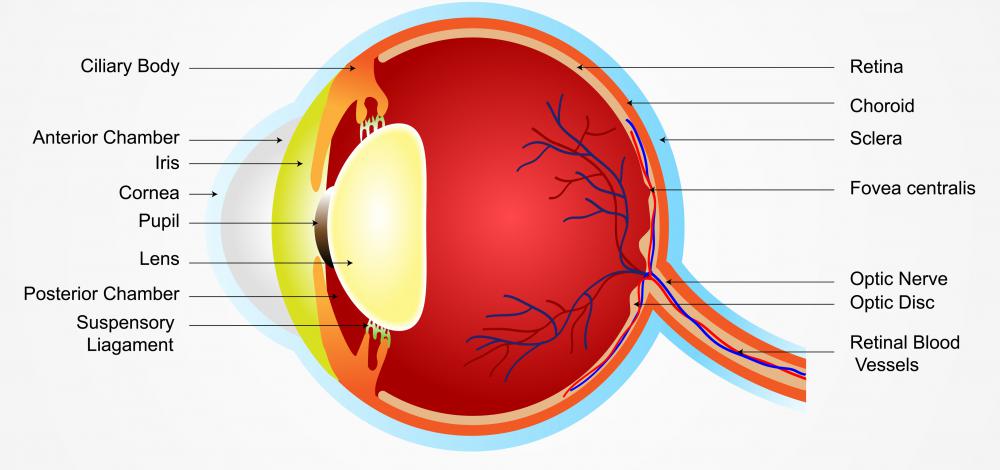At WiseGEEK, we're committed to delivering accurate, trustworthy information. Our expert-authored content is rigorously fact-checked and sourced from credible authorities. Discover how we uphold the highest standards in providing you with reliable knowledge.
What are Angioid Streaks?
Angioid streaks are injuries to a part of the eye called the Bruch's membrane, located in the retina at the back of the eye. The appearance of streaks in the Bruch's membrane is caused by fine cracks. Over time, the cracks can expand and lead to visual impairment. This condition is diagnosed and treated by an ophthalmologist and there are a number of treatments available for patients.
The causes of this condition appear to be related to the general loss of elasticity that happens to the body over time. Many cases of angioid streaks are seen in older men in whom the Bruch's membrane has lost its elastic characteristics, making it more prone to cracking and damage. Minerals can be deposited in the membrane, leading over time to damage. When viewed in an exam, the streaks tend to ray out from around the optic nerve and they look like a fine network of blood vessels, explaining the name, as “angioid” means “like blood vessels.”

In the early stages, many patients with angioid streaks are asymptomatic. The changes to the eye are identified during a routine exam. The doctor may ask the patient to take an eye test to assess the patient's current quality of vision, as this information can be useful over the course of treatment. Initial patient care for angioid streaks may be a watchful waiting approach, with the doctor periodically checking for signs of changes to the eye and otherwise leaving it alone.

As the condition progresses, angioid streaks can be treated with lasers and phototherapy, and surgery in some cases. These measures are designed to maintain the integrity of the eye as much as possible, helping the patient retain visual acuity. Eventually, visual impairments can develop and the patient may take steps to prepare, such as using low vision aids around the house to get used to them.

People with sickle cell anemia, Ehlers-Danlos Syndrome, and Paget's disease, among other conditions, are at increased risk for developing angioid streaks. These patients may be advised to undergo eye exams more frequently to check for early signs of injuries to the eye so they can be addressed before significant impairments set in. Generally, eye exams should be had every one to two years, especially in older adults, as damage to the eye is usually irreversible and can progress very rapidly, making it important to identify as early as possible.
AS FEATURED ON:
AS FEATURED ON:
















Discussion Comments
The cause of angioid streaks is also Pseudo Xanthoma Elasticum, known as PXE.
Post your comments